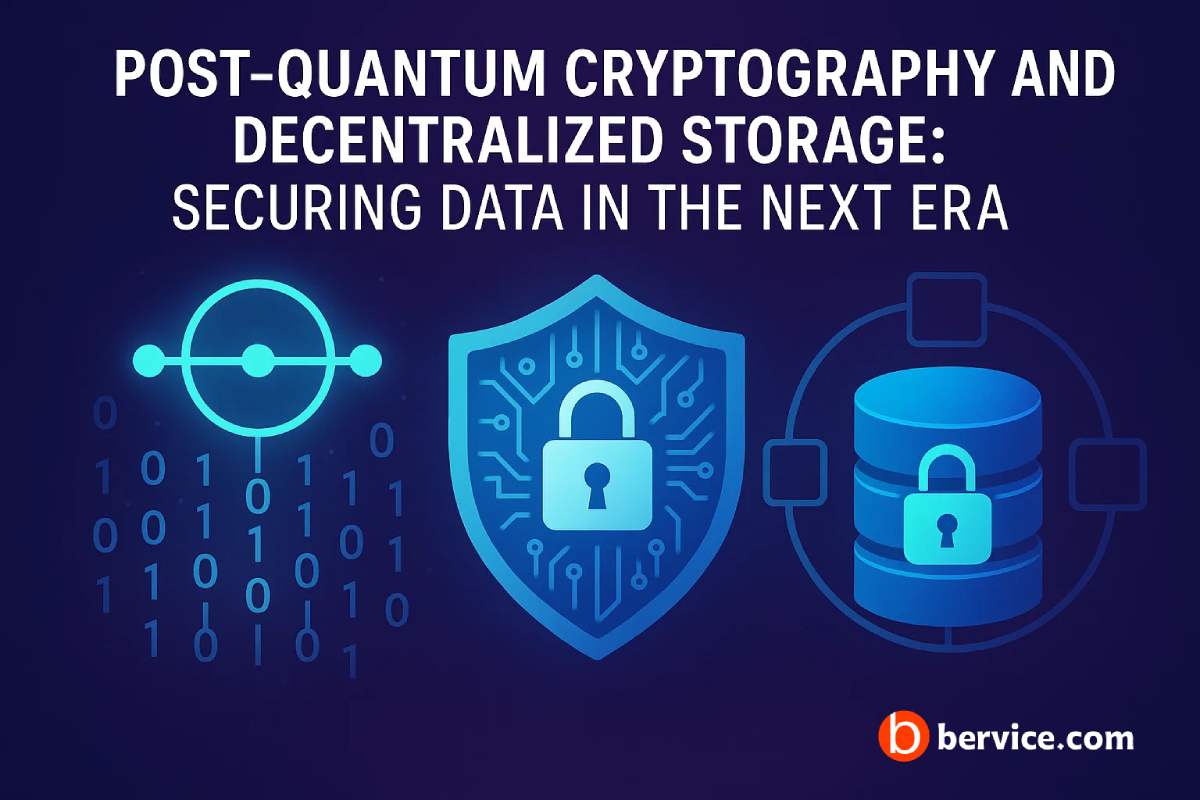Introduction: A New Era of Digital Security
As quantum computing rapidly advances, the traditional cryptographic algorithms that have protected our digital world for decades are facing a serious threat. Quantum computers, leveraging the principles of quantum mechanics, could break widely used encryption schemes such as RSA and ECC in a matter of hours—rendering current security infrastructures obsolete.
At the same time, the rise of decentralized storage networks like IPFS and Filecoin has introduced a new way to store and share data without relying on centralized authorities. But decentralization alone does not guarantee security in a post-quantum world. This is where Post-Quantum Cryptography (PQC) steps in.
What is Post-Quantum Cryptography?
Post-Quantum Cryptography refers to cryptographic algorithms designed to be secure against both classical and quantum computing attacks. Unlike classical public-key cryptography based on factorization or discrete logarithms, PQC relies on hard mathematical problems believed to be resistant to quantum attacks, such as:
- Lattice-based cryptography (e.g., Kyber, Dilithium)
- Hash-based signatures
- Multivariate polynomial cryptography
NIST (National Institute of Standards and Technology) has already selected PQC standards like CRYSTALS-Kyber for encryption and CRYSTALS-Dilithium for digital signatures, laying the foundation for quantum-safe security.
Decentralized Storage: Beyond Centralized Vulnerabilities
Traditional cloud storage systems store data on centralized servers owned by tech giants. This centralization introduces:
- Single points of failure (data breaches, outages)
- Privacy risks (service providers accessing user data)
- Censorship vulnerabilities
Decentralized storage platforms such as IPFS, Arweave, and Storj solve these problems by distributing encrypted data across peer-to-peer networks. No single party controls the entire dataset, making censorship and unauthorized access nearly impossible.
Why Combining PQC with Decentralized Storage is Crucial
While decentralized storage improves privacy and data availability, the encryption keys and communication channels still rely on classical cryptography. Once quantum computers become powerful enough, they could:
- Decrypt stored data retroactively if encryption keys are compromised.
- Intercept and decode communications between storage nodes.
By integrating PQC algorithms into decentralized storage networks, we can ensure:
- Future-proof data security: Even if attackers record encrypted traffic today, they cannot decrypt it once quantum attacks become feasible.
- Resilient distributed networks: Quantum-safe encryption ensures node-to-node communication remains secure against quantum adversaries.
- Zero-knowledge proofs with quantum resistance: For blockchain-based storage, quantum-safe signatures keep transactions verifiable but private.
Real-World Applications
- Healthcare: Storing sensitive medical records securely in decentralized networks protected by PQC.
- Finance: Quantum-safe, decentralized ledgers for transaction history and regulatory compliance data.
- Intellectual Property: Encrypted decentralized vaults for research data, patents, and legal documents.
- IoT Ecosystems: Billions of connected devices relying on PQC to maintain data integrity and confidentiality.
Challenges Ahead
Despite its promise, integrating PQC with decentralized storage faces several challenges:
- Performance overhead: PQC algorithms often require larger key sizes and more computational power.
- Standardization: Different platforms adopting different PQC algorithms may cause interoperability issues.
- Transition period: Migrating existing data and infrastructure to post-quantum standards requires significant planning.
The Road Forward
The future of digital security lies in combining quantum-resistant cryptography with distributed architectures. Projects like Bervice and similar decentralized platforms are already exploring this frontier—building storage and password management systems that leverage PQC to secure data against the computing power of tomorrow.
Organizations, governments, and tech companies must act now to:
- Adopt NIST-approved PQC standards
- Integrate PQC into decentralized ecosystems
- Educate developers and businesses about quantum security threats
Conclusion
The digital world is on the brink of a quantum revolution. By merging Post-Quantum Cryptography with Decentralized Storage, we can create systems that are not only resistant to quantum attacks but also immune to centralized control and censorship. This synergy will define the next era of data security—an era where privacy, integrity, and availability remain unshaken by technological disruption.
Connect with us : https://linktr.ee/bervice
